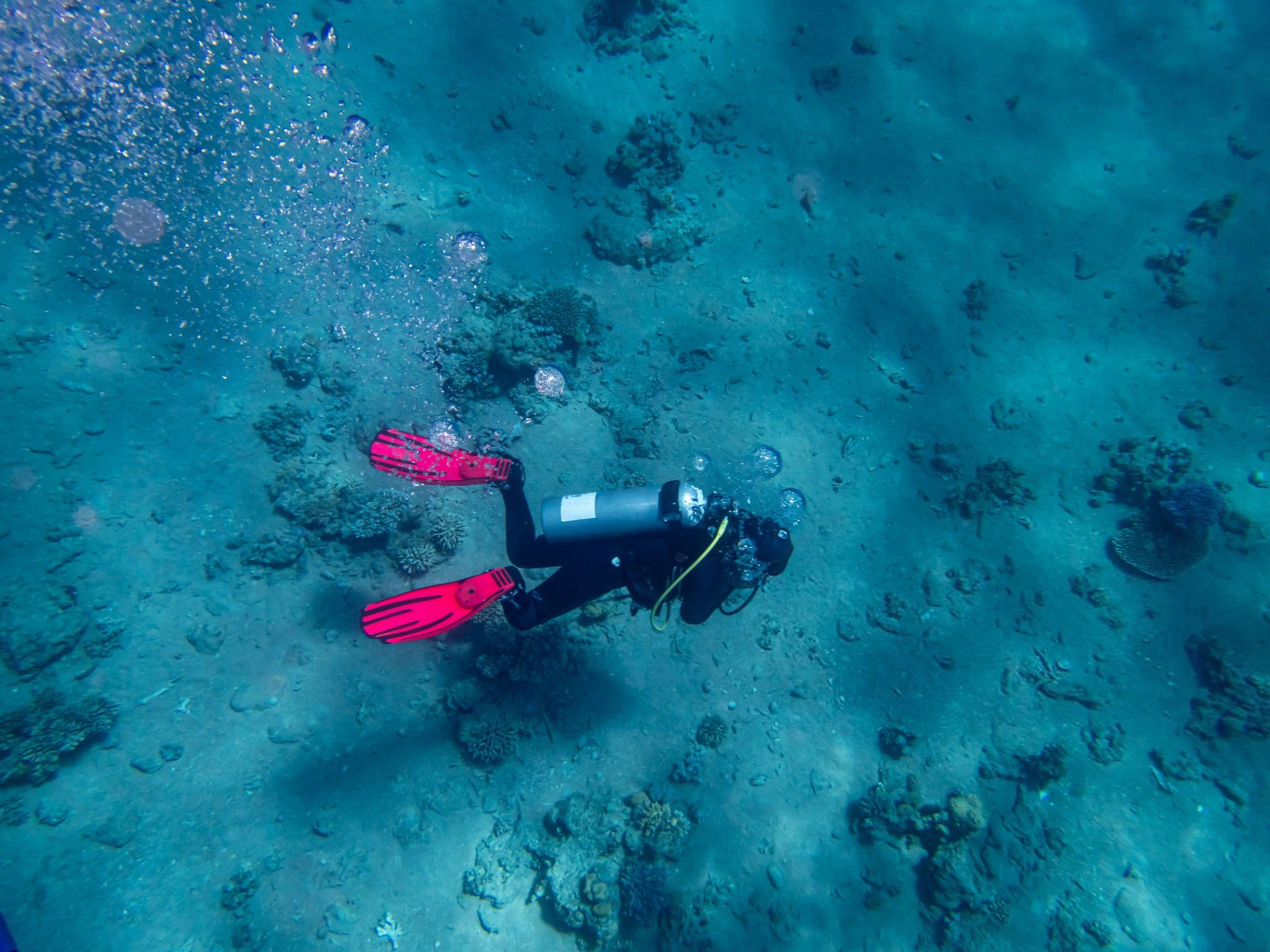The Problem with Shooting Downward in Underwater Photography
Shooting downward underwater is a common, major mistake in underwater photography. Almost every beginner (about 99%) falls into this trap. If not fixed, this mistake can become a bad habit. It will create significant obstacles to your skill development.
Why Does This Mistake Happen?
Once you put on a diving mask and look into the water, you form a habit. You start to observe the underwater world from a downward angle. This is a natural reaction. Using a snorkel and fins, you swim in a horizontal position while facing downward to move from point A to point B.
The habit becomes even more ingrained when you start scuba diving. It’s a relaxed and comfortable position, allowing you to view everything below. While this is fine for enjoying a dive at a relaxed pace, it’s a disadvantage when holding a camera. Shooting downward produces images that lack compelling qualities and visual appeal.
Think back to your first encounter with a sea turtle, a manta ray, or a small reef shark. When your dive instructor tapped the tank and pointed up, you looked up into the blue. Yet, moments later, you likely resumed your usual position. You swam parallel to the surface, with your eyes fixed on the seabed. You missed chances for better shots.
A Land-Based Photography Analogy
Would you ever photograph children playing by pointing the camera down at them? Or take pictures of your pets by standing above them? Likely not. Instead, you would crouch to their level, capturing a natural and engaging perspective.
The same principle applies to underwater photography. However, it’s not easy to change your perspective underwater. Old habits and comfort zones get in the way.
Signs You Might Be Making This Mistake
If these issues sound familiar, it’s time to adjust your shooting habits.
How to Fix It and Improve Your Composition
1. Always Remember: Shoot Horizontally or Upward
Train yourself to shoot at eye level with your subject or aim upward instead of down. A simple trick is to label your camera housing with “Shoot Up” as a constant reminder.
For example, don’t shoot from above when photographing a sea turtle. Dive deeper and shoot upward as sunlight streams through the water. This approach highlights the subject and adds a dynamic, powerful feel to your image.
2. Seek Prominent Subjects
Focus on creatures or scenes that rise above the coral reef. It’s easier to approach subjects like turtles, rays, or tall corals from below. This lets you shoot upward.
3. Practice Approaching Fish from Below
Move with care and at a deliberate pace to avoid startling your subjects. Approach fish from a lower angle whenever possible for more dynamic shots.
The Psychology of “Up” and “Down”
Images that look “upward” often evoke positive and powerful emotions. Consider these ideas:
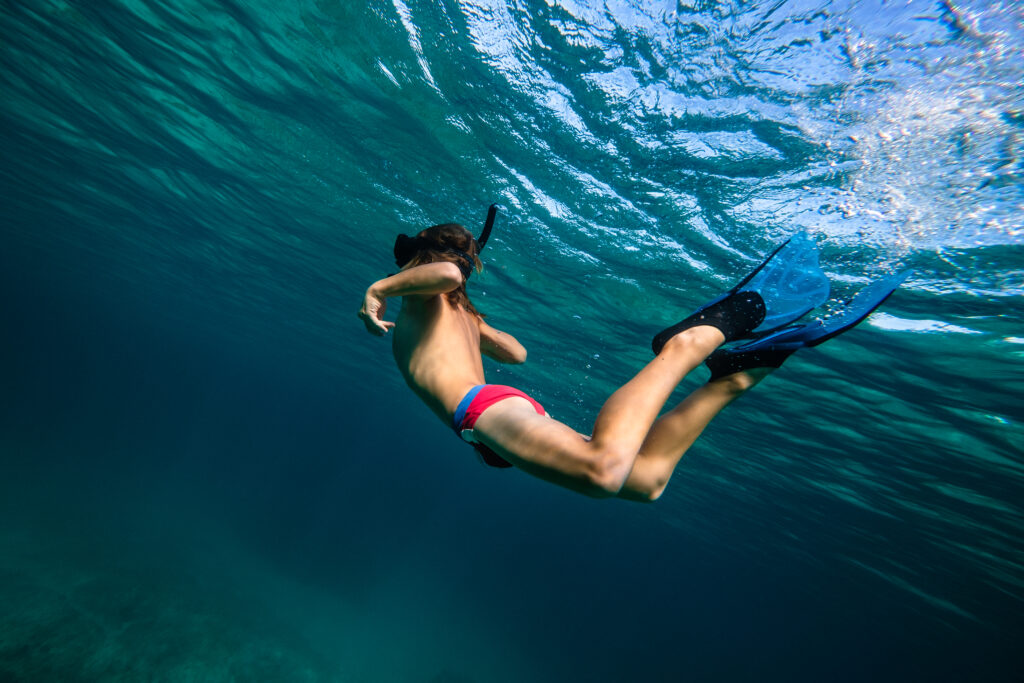
But downward views tend to feel negative.
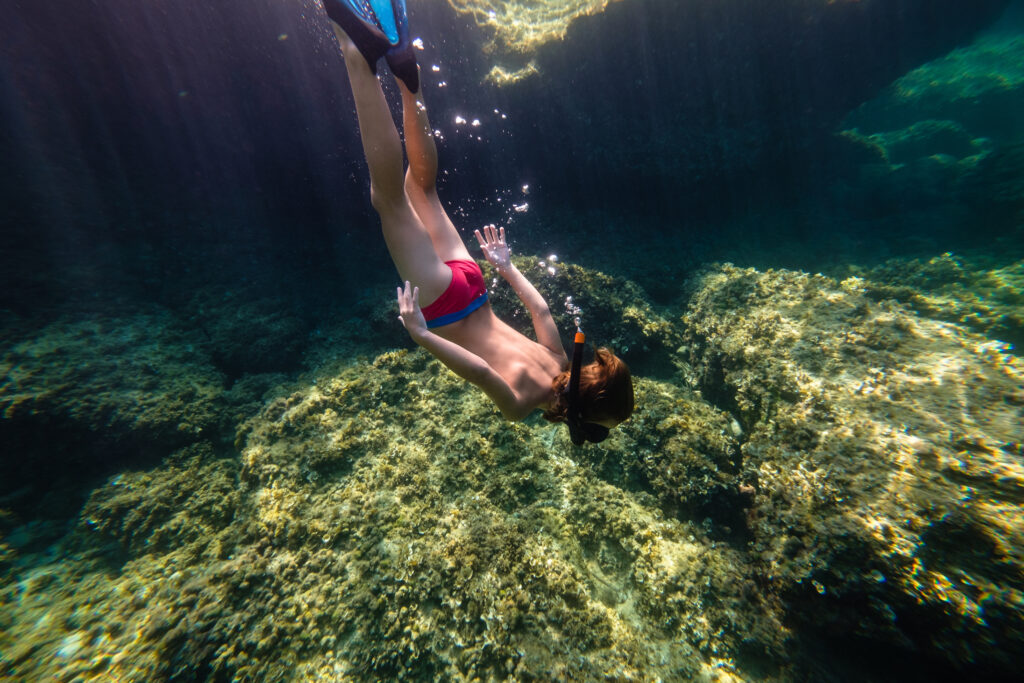
Use upward angles to bring energy and positivity to your underwater photos.
Exceptions: When Is Shooting Downward Effective?
While horizontal or upward angles are usually best, there are exceptions. Shooting downward works well in some cases.
- No Clear Horizon In abstract shots, like those of fish patterns, a downward angle helps to isolate the subject.
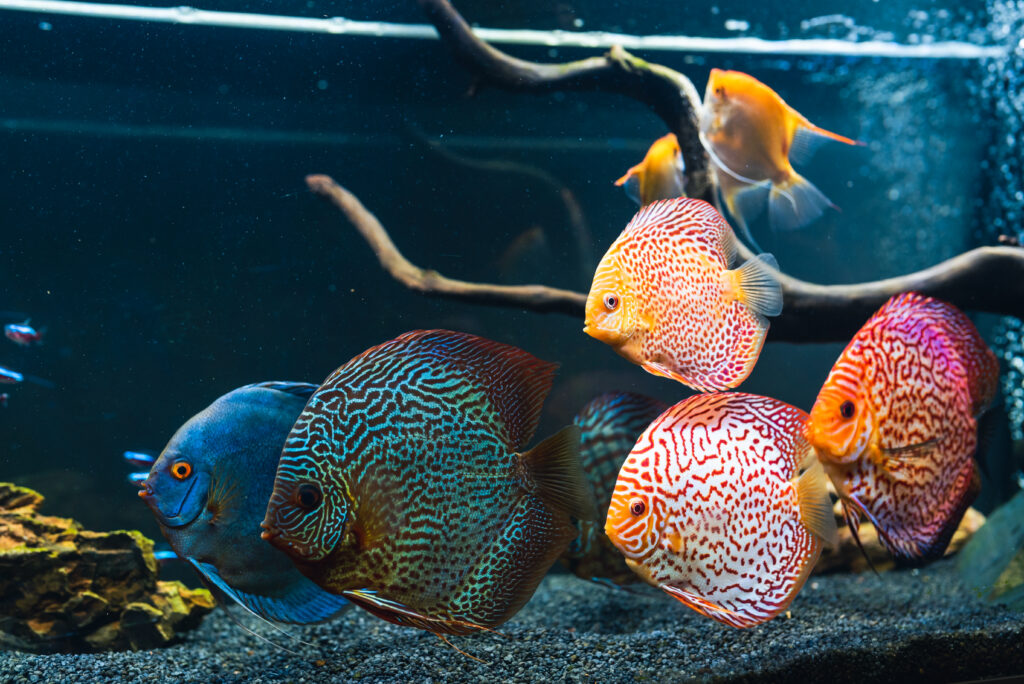
2. Beautiful Top-Down Shapes Some subjects, like turtles, rays, or whales, look stunning from above. In Hawaii, many manta ray artworks showcase their elegant shapes from a top-down view.
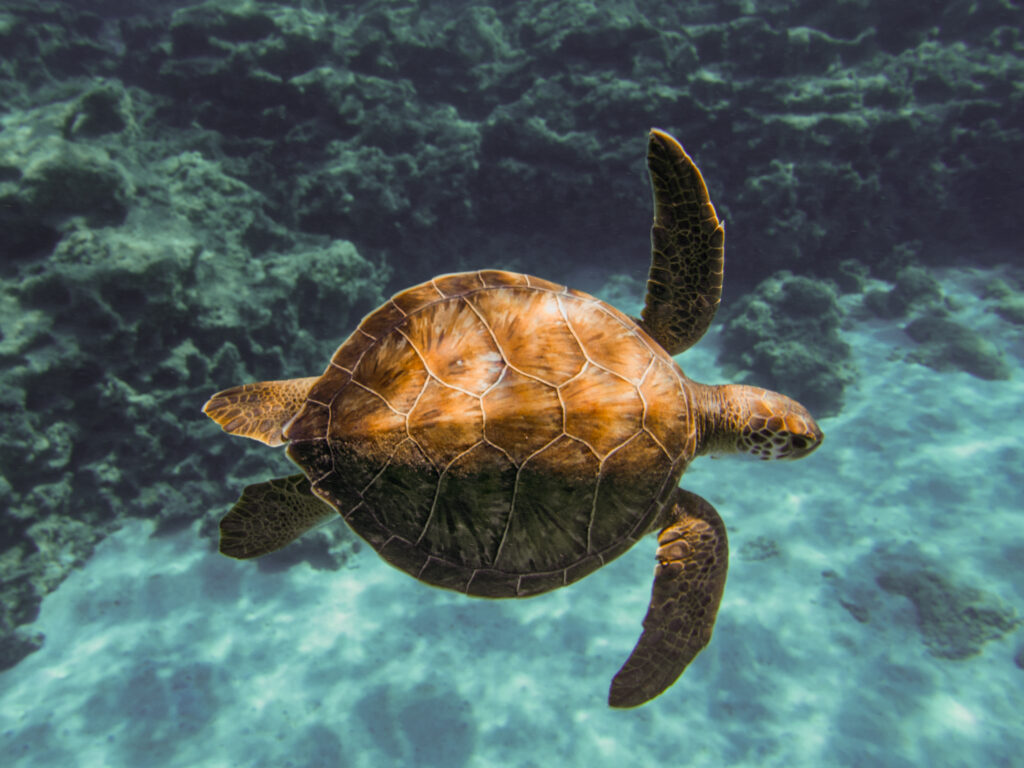
3. Top-Facing Eyes and Mouths. It’s best to photograph marine creatures, like stingrays, lionfish, and crocodiles, from above. This is due to their unique physical structure.
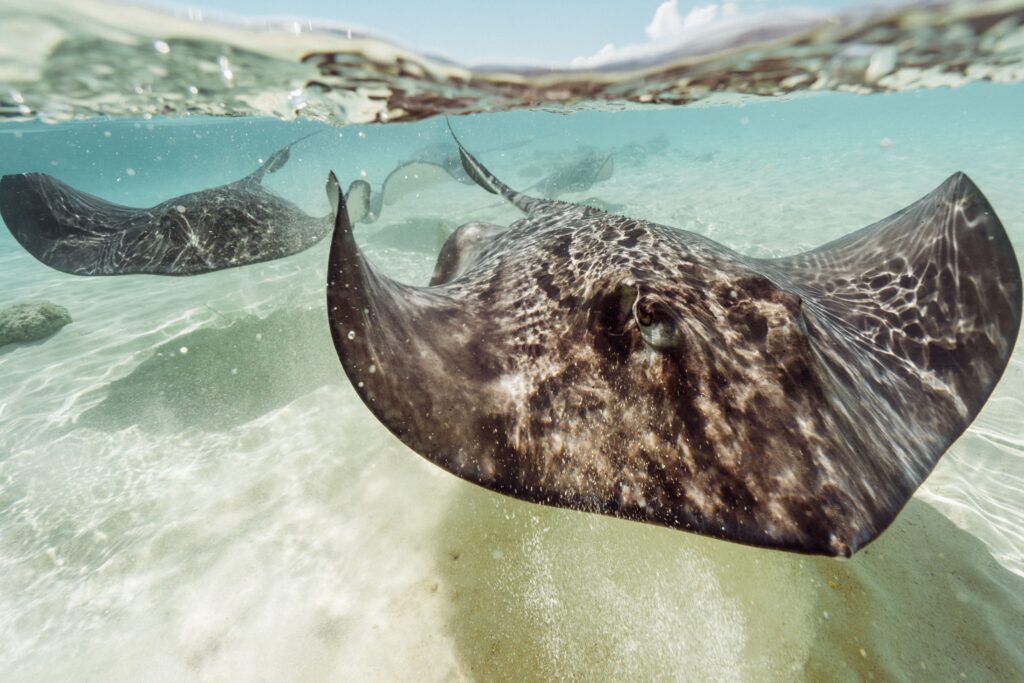
4. Eye Contact from Above When marine life looks at your lens, it can elevate the shot, even with a downward angle.
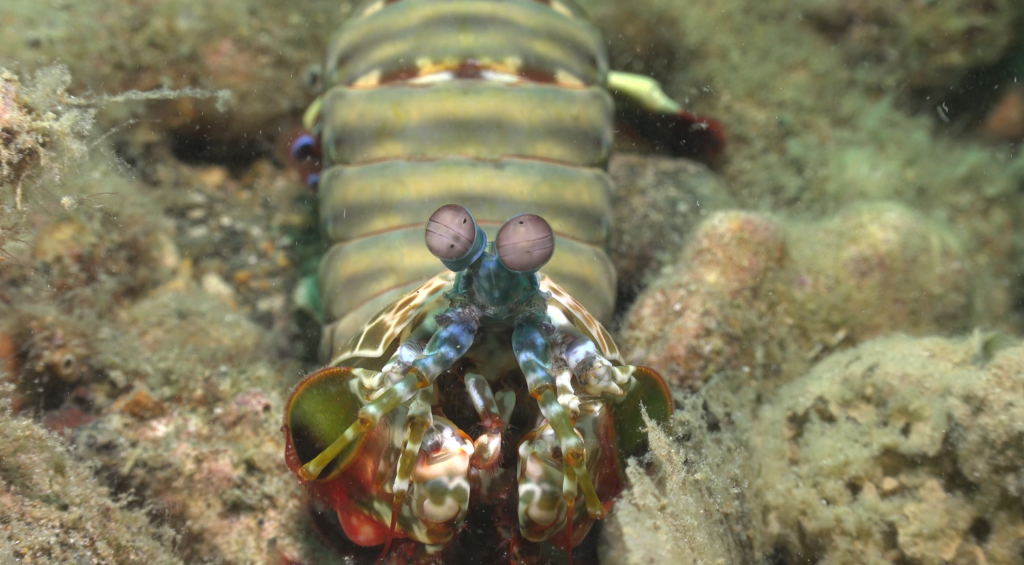
closeup of mantis shrimp sitting on coral reef
5. Wrecks and Sunken Objects Shipwrecks and sunken planes often look better from above. It shows their scale and detail.

6. Seascapes with Magic Filters Using Magic Filters to capture seascapes is another exception. Sunlight filtering from above, at a downward angle, can create stunning images.
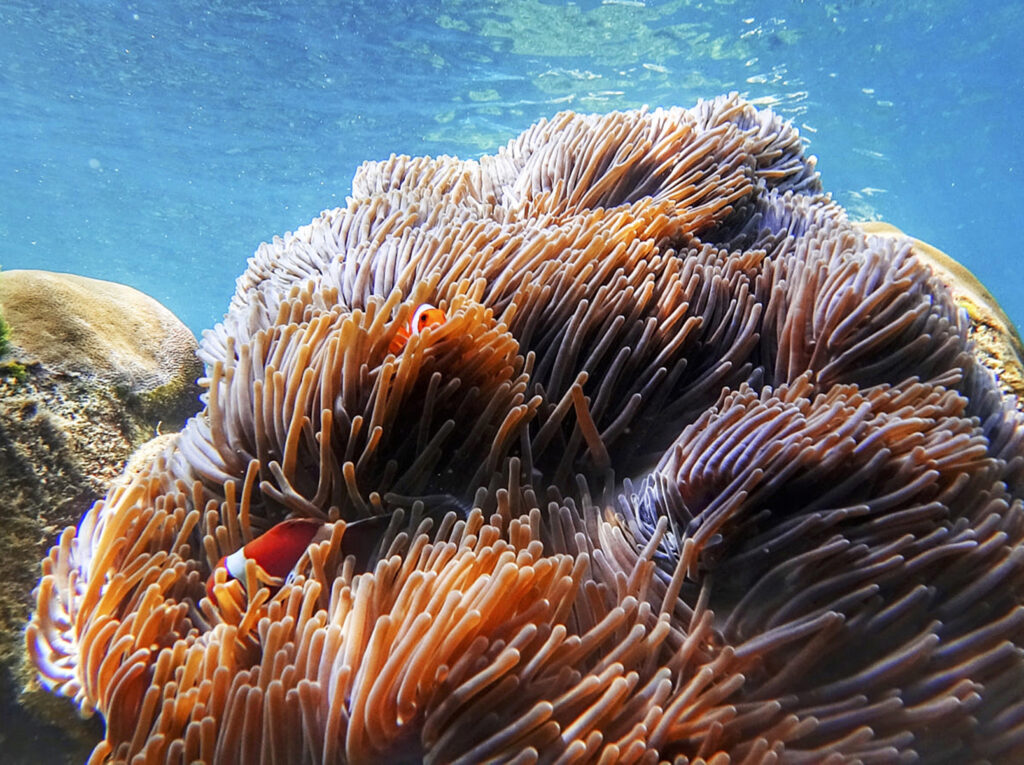
Conclusion: Always Be Mindful of Your Angles
Ask yourself: What are your favorite underwater photos? Most likely, someone shot them at eye level or upward. Follow these key principles:
- Only shoot downward when the subject’s shape is best captured from above.
- Opt for horizontal or upward angles to create vibrant, engaging images.
- Remember the six exceptions above for creative flexibility.
On every dive, label your camera housing with “Shoot Up” and practice this approach. This small change could lead to a big breakthrough in your underwater photography.
